

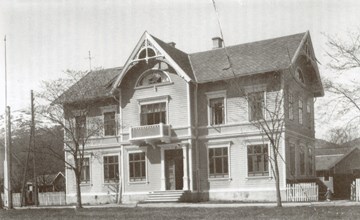
"Gamlebanken" is the popular name of the house which Førde Sparebank (Førde Savings Bank) had built in 1901 and moved into in 1902. Its address is Kyrkjevegen 9, and it is a distinctive building in the centre of Førde. It was used by the bank for 62 years, and also for various community purposes during this period.
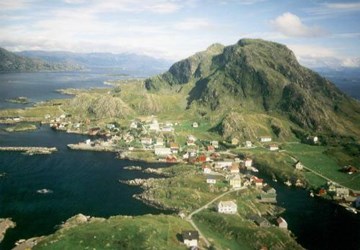
Rognaldsvåg is the main village on the island of Reksta, in the westernmost part of the municipality of Flora. The settlement on Reksta probably goes back 5000 years. Rognaldsvåg gradually became an important place because of the good harbour facilities, the proximity to the rich herring fisheries, and its central location. In 1860, Rognaldsvåg was the biggest built-up area along the coast of the county of Sogn og Fjordane.
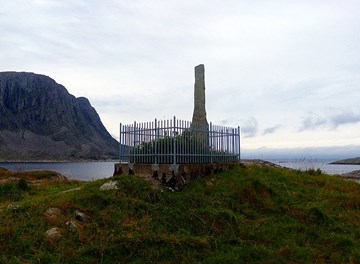
On a crag on the island of Hovden to the west of Florø stands a three-metre-high stone in commemoration of Johan Schumann. The memorial stone was erected at the same time as the urn containing his ashes was buried there some time after his death in 1911. Who was he, this man who was honoured with such a special memorial?
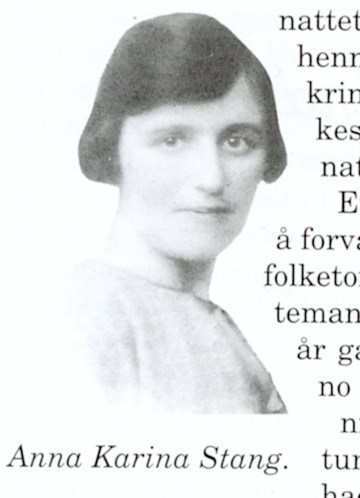
Anna Stang (1899-1996) is a fine representative of the singing tradition in the western Sunnfjord district. Her repertoire was varied and comprised different types of folksongs and religious songs.
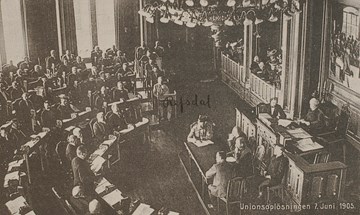
In 1905, Norway became a free and independent state. The union with Sweden was dissolved by resolution in the Storting on 7 June. This article is about Gjert Holsen from Førde, who was a Member of the Storting in 1905.

On the night of 13 January 1925, SS "Aladdin" ran aground on the eastern side of Silda. The whole crew survived this dramatic accident, but it meant the end for the ship. The ship was broken up there on the shore and transported away as scrap iron. But a broken concrete base still remains on the shoreline as a remnant of a strange shipwreck.
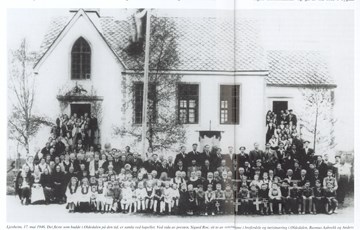
Ljosheim chapel, built in concrete and wood, is situated on the farm of Mykløy in the valley of Oldedalen in the municipality of Stryn. The chapel has a seating capacity of 130, and it was built in 1924 and consecrated for church functions on 22 October, 1935. The emissary Andreas Sande made the designs. Ljosheim chapel belongs to the Olden "sokn" in the parish of Innvik.
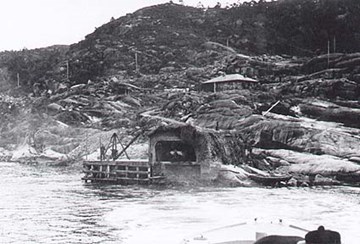
As early as in May 1940, the Germans came to Rutledal and built a land-based facility for launching torpedoes. Later on they started building a coastal fort and infantry soldiers were also deployed at Rutledal.
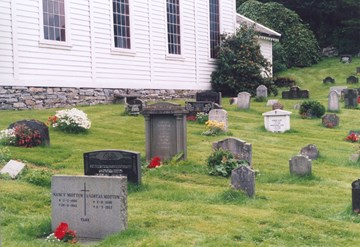
Augustin Bredvik (1868-1952) was bailiff in Gulen for more than 40 years. "One of the pillars of western Norway" as the newspaper Firda put it in an obituary. On 15 August 1954, a memorial stone was unveiled on his grave at the church at Eivindvik.

Seven men from the former municipality of Nord-Vågsøy lost their lives during the war 1940-1945. On Sunday 16 September 1945, there was a memorial service and on 17 May the following year, people from the whole municipality gathered to attend the unveiling ceremony of the memorial stone. The memorial stone was originally erected at the Raudeberg school, but was later moved to the church.
2 liters of water
approx. ¾ kilos of cut soup bones of salted/dried meat
2 cups of dried mutton in small pieces
2 cups of dried pork in small pieces, bacon can also be used
small dumplings made of 3 raw grated potatoes
½ boiled potato mashed
½ teaspoon salt
semolina to make about 2 ½ cups of batter
2 cups of sliced carrots
2 cups of white cabbage cut in pieces

A short distance from the sea at the farm of Ålen in Askvoll, there is a memorial stone for three young boys who lost their lives in the war 1940-1945. They were all members of Vevring Fiskarlag (fishermen association), and it was this association that soon after the war took the initiative to have a memorial erected. The stone was unveiled in 1950.

At the Bremanger church at Bremangerlandet there is a memorial stone commemorating those who died in the Second World War from the former municipality of Bremanger. They all served in the fight for the freedom of Norway - one as a pilot, the twelve others as seamen. Many took part in the so-called Shetland Bus operations. The memorial was raised in 1947.
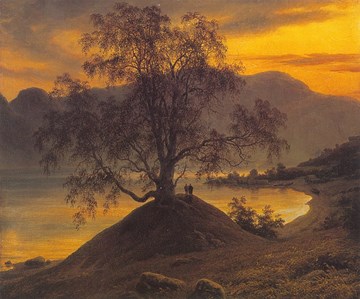
The famous Slinde birch blew down in an autumn storm in 1874, but thanks to many painters, it is still very much ¿alive". Thomas Fearnley¿s painting ¿Slindebirken" from 1839, is today included in the ¿canon" of works of art by Norwegian painters. The Slinde birch was more than just an ordinary tree.

On Friday 19 October, 1945, the Selje church was filled to capacity by village people and others. The occasion was the funeral for Oluf Ingebrigtsen Aarsheim. He lost his life in a war episode in the Atlantic and now his urn had been brought home. Afterwards his siblings erected a memorial stone on his grave.